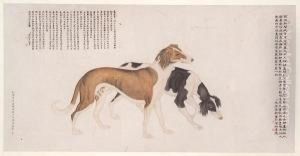Ignaz Sichelbart Paintings
Ignaz Sichelbart, also known as Ignatius Sichelbarth, was a Bohemian Jesuit lay brother and painter. He was born in 1728 in Neunburg vorm Wald, Bavaria, and became noted for his work in China during the 18th century. Sichelbart's talent as an artist was recognized early on, and he became associated with the Jesuit missionaries who were active in China during this period.
Sichelbart went to China as a missionary in 1755 and is most famous for bringing European painting techniques into the Chinese imperial court. He became part of a group of Jesuit artists, which included Giuseppe Castiglione and Jean-Denis Attiret, who were serving at the Qianlong Emperor's court. These artists were commissioned to create artworks that melded European techniques with traditional Chinese artistic sensibilities, which resulted in a unique and culturally blended style.
During his time at the court, Sichelbart worked on various projects, including painting, teaching, and collaborating on the production of the 'Siku Quanshu' ('Complete Library in Four Branches of Literature'), one of the largest collections of literary works in Chinese history. His contribution to this monumental work included illustrations that demonstrated his adaptability and skill in accommodating different artistic styles. Sichelbart's legacy is not only in the artworks he produced but also in the influence he had on the cross-cultural exchange between Europe and China. His paintings are considered important examples of early Sino-European art and continue to be studied for their historical and cultural significance.
Ignaz Sichelbart passed away in 1780 in Beijing, leaving behind a legacy that marks an important chapter in the history of cultural exchange between East and West during the 18th century. Although not as widely known as some of his contemporaries, his work remains a testament to the rich dialogue between different artistic traditions and the role of the Jesuit missionaries in this cultural fusion.
